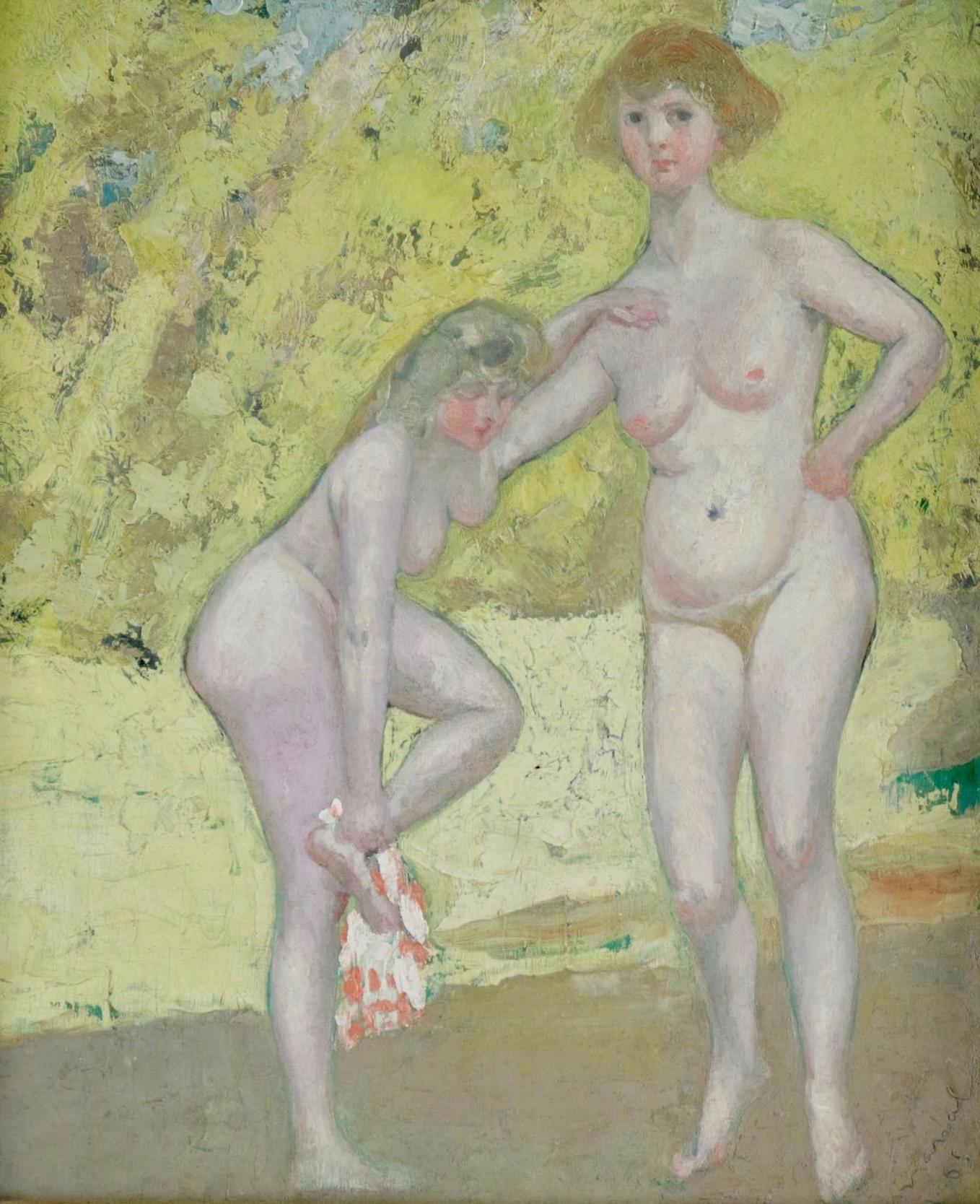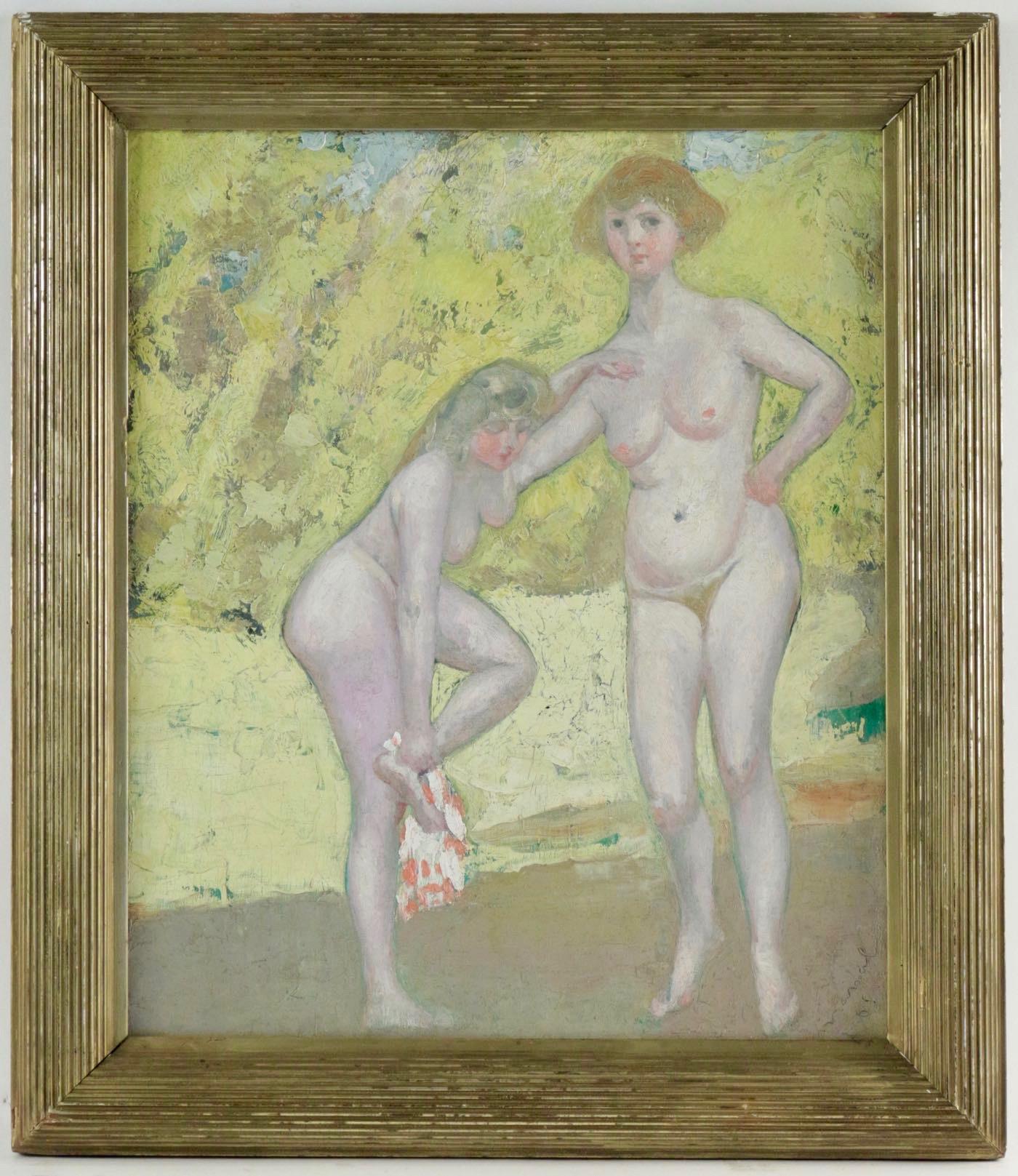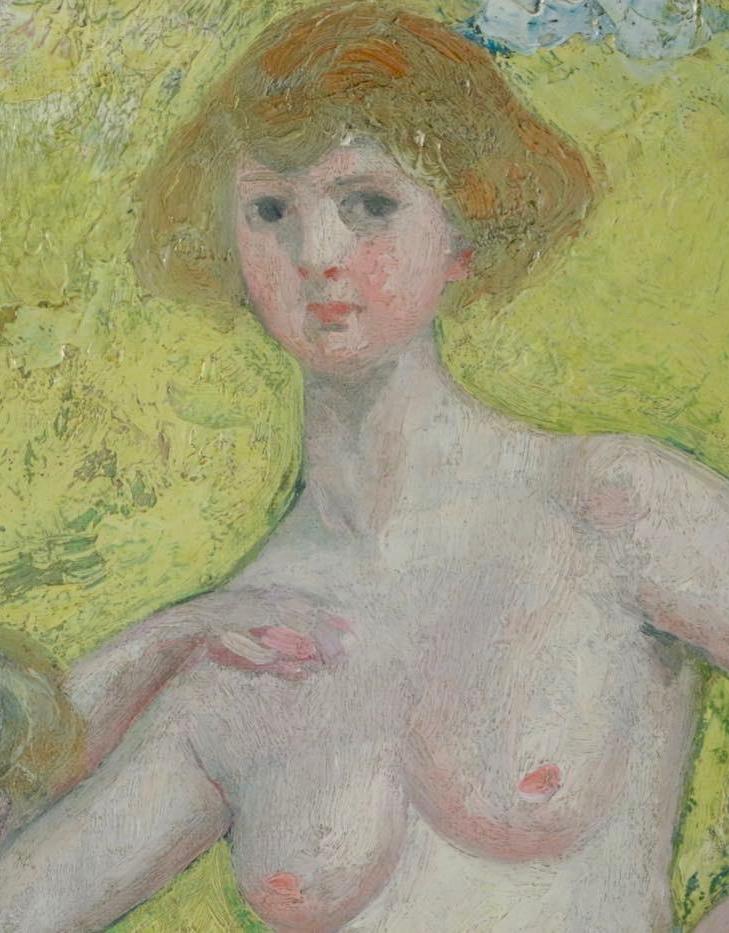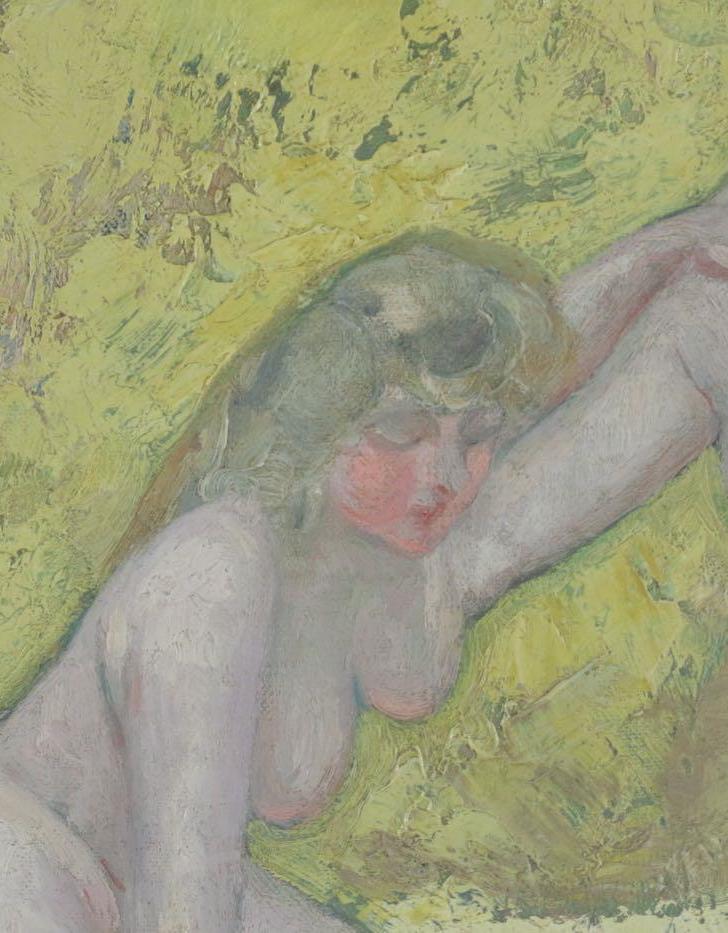Jacqueline Marval
The bathers , dated 1905
Oil on canvas
Signed and dated lower right
Dimensions: with frame 67.5 x 58.5 cm
Reproduced p. 66-67 in François Roussier, Jacqueline Marval: 1866-1932
Price upon request
This tawny-colored painting depicts two naked young women on a riverbank. They are depicted in a natural, relaxed attitude. One balances on one foot and leans on the other’s shoulder to dry her feet.
The bright, acidic colors in the yellow of the background contrast with the pink of the bodies, giving the work a joyful, luminous atmosphere and an impression of freedom and spontaneity.
By depicting naked women so openly, Jacqueline Marval defied convention and asserted her independence.
Biography:
Jacqueline Marval is a painter from the end of the 19th century and the turn of the 20th century. Born in 1866 from a family of teachers near Grenoble, she did not come to painting until late. She moved to Paris in 1895 in Montparnasse, at the heart of artistic life at the end of the century.
A modest seamstress by trade, she was introduced to painting at the instigation of her companion Jules Flandrin (1871 – 1947), a pupil of Gustave Moreau. He encourages her talent as an observer and colorist. She meets Matisse, Guérin, Laurencin, Camin, Rouault, Marquet and the others.
The artist opens the way to dream and softness in his poetic compositions. A talented painter, she modeled herself on the ideas of Fauvism: breaking perspective, giving density to the pictorial material through color and touch, leaving academic subjects to enhance the verism of the landscape as the dreamlike projections of the mind.
Her paintings were refused at the Salon of 1900, she only exhibited there the following year. At that time, genius collectors and gallery owners Berthe Weill, Ambroise Vollard and Eugène Druet bought and exhibited his work. In February 1902, Jacqueline Marval exhibited alongside Matisse, Marquet, and his companion Flandrin at Berthe Weill, 25 rue Victor Massé.
From then on, she took off and exhibited in the four corners of the world (from the Metropolitan in New York to the Ohara museum in Kurashiki in Japan, passing through all of Europe), was praised by critics (Guillaume Apollinaire considered her to be ” one of the most remarkable artists of this time” Le Temps, February 25, 1912) and provokes the admiration of all, whether by his work or by his strong personality
Bibliography:
• François Roussier, Jacqueline Marval : 1866-1932 , Paris, Thalia Edition, 2008 (reprinted 1987), 407 pages
Museums:
• In France: Nantes Fine Arts Museum, Grenoble Fine Arts Museum (including a portrait of the artist by Jules Hippolyte Flandrin), Goya Museum in Castres, Mainssieux Museum in Voiron, Paul Dini Museum in Villefranche-sur -Saone.





